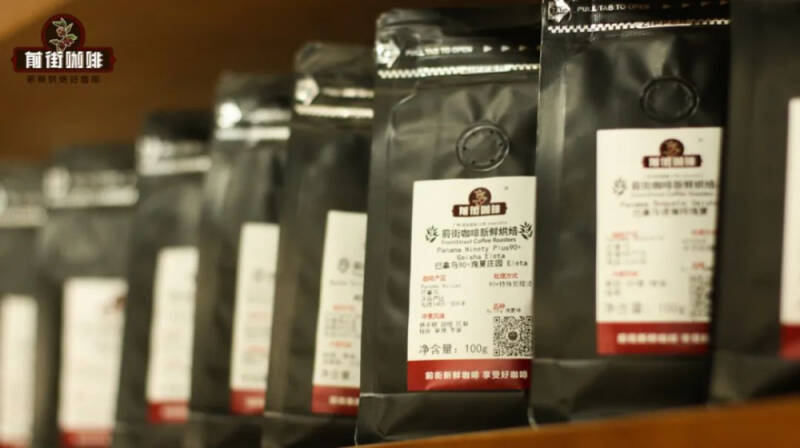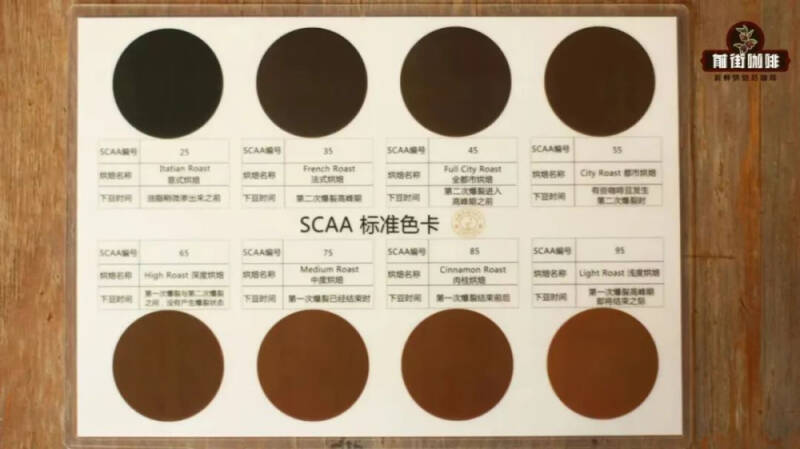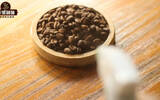What are the powder value and color value of coffee beans? How to judge the degree of roasting coffee? Why does coffee taste sour?
The taste of coffee mainly comes from its own genes (varieties), the environment in which it is planted, and the way it is handled! When beans go through these links, they will establish their own flavor characteristics, and then just wait for the baker to cook, and then they can become a "delicacy"! The depth of roasting determines the taste trend of coffee beans (sweet, sour and bitter), so when we buy beans or drink coffee, in addition to the source information of beans, roasting degree is also a message that most friends will pay attention to!

Just like distinguishing the washing and sun by the "white line" of coffee beans (a way of processing coffee beans by their appearance), the roasting degree of coffee beans will be initially judged by visual observation, because there is a set of scientific distinguishing methods in the industry, that is, the color of roasted coffee beans is used to identify the degree of baking! The following is an Agtron color value card, you can have a superficial understanding. It is a baking distinction table developed by digitizing the color of beans! The value here refers to the Agtron color value (caramelization analysis value). The higher the value, the lighter the roasting degree of the coffee bean and the lighter the color; the smaller the value, the deeper the roasting degree and the color of the coffee bean.

However, careful friends will find that the beans sold in front of the street do not have a logo about the degree of baking. Obviously there is such a distinction, why not mark the baking degree of beans on the front street? The reason is actually very simple, because such a standard only according to the color of coffee beans to distinguish, some special beans do not apply this way.
For example, honey-treated and anaerobic-treated coffee beans are coated with pectin, fruit juices and other substances for a long time, thus attaching a layer of sugar to the bean surface. The presence of these sugars will cause the appearance of beans to be more strongly caramelized, so although they will have a very rich floral flavor after baking, the appearance will be stained with a darker color because of the presence of sugar. If we use color values to distinguish them, then they will belong to deep-roasted coffee beans. For example, the dividing line of the claw, although its color value reached 61, the color card defined on the depth of baking is a little deeper, but it has a very abundant flower and fruit aroma!
Therefore, there are some loopholes in this distinction, and we can not use it to establish the standard of baking degree. If we do not distinguish according to the color value card, then there will be differences because of our different understanding of the baking degree! For example, for the same bean, A believes that shallow baking should be in an explosion, while B believes that shallow baking develops for a minute after an explosion (just an analogy). Different cognition will lead to communication obstacles, so Qianjie will be more recommended to judge the depth of baking by the description of taste and flavor.
Nowadays, when we are baking coffee, it is generally believed that the node where the coffee is "ripe" is "exploding". At any point after the explosion, we can stop baking and let the coffee out of the oven. It is important to know that raw coffee beans are very rich in organic acids, and most of these sour substances decompose gradually with the progress of the baking process. Therefore, the earlier we come out, the more sour substances will be retained, so when we drink a cup of coffee with full sour taste, it can be defined as medium-light baking; and the later it comes out, the more sour substances are lost, and the bitterness produced by caramelization will gradually replace the dominant position of sour taste! Therefore, if we drink a cup of coffee dominated by bitterness, it can be defined as medium-and deep-roasted coffee (except for over-extraction)!
Based on this standard, we can judge the depth of coffee beans by the flavor description on the packaging label. For example, most citrus fruits have relatively full acidity, so when this kind of fruit appears in the flavor description column, we can initially judge it as a shallow coffee bean in shallow roasting; if there is a description of melon and compound fruit in the flavor label, we can preliminarily judge it to be a medium-shallow roasted coffee bean, because this kind of coffee bean will have a higher sweetness. If chocolate, brown sugar, brown sugar and other descriptions appear in the flavor label, we can initially judge it as a medium-to-deep roasted coffee bean. If there is a description of dark chocolate, caramel, pine and so on, it can be judged as a deep coffee bean in medium and deep baking. Of course, this is only a preliminary and can only provide us with a reference when buying beans. Remember that you can't generalize. In the end, you have to taste it in order to get a real baking information.
-END-
Important Notice :
前街咖啡 FrontStreet Coffee has moved to new addredd:
FrontStreet Coffee Address: 315,Donghua East Road,GuangZhou
Tel:020 38364473
- Prev

How will bubbles appear when steaming hand-brewed coffee affect extraction? How does the channel effect occur? How to solve uneven extraction?
You should have more or less seen that during the steaming process, many bubbles will constantly emerge from a certain position on the powder bed, just like a small goldfish or a small crab hidden at the bottom and constantly exhaling! Although it is a very healing picture, for some players, the appearance of this phenomenon is not a single thing.
- Next

Lucky launched "Marble Ice American", which was cheated by netizens for selling similar "tofu pudding"
▲ Click to pay attention| Daily Boutique Coffee Culture Magazine Coffee Workshop At Starbucks, there is a hidden menu that is very popular. Its structure is very simple and consists of only three elements: espresso, cream, and ice cubes. As long as it has the corresponding materials, it can be easily reproduced at home. In fact, this drinking comes from
Related
- Can artificial hand brewing replace the barista's real hand brewing coffee? What is the difference between making coffee with fake hands and making coffee with real hands?
- Can't sell it?! Coca-Cola gives up selling Costa!
- The brewing parameters of the world's top rose summer coffee, ratio, water temperature, grinding and sharing! Graphic teaching on Emerald Manor Rose Summer Brewing Method!
- Jasmine milk tea, a new cup of ice?! Netizen: Why don't you just sell ice cubes
- Is it necessary to buy a cloth powder for an espresso machine? Why should we evenly distribute the powder when extracting espresso?
- What is the grinding ratio, water temperature and powder amount needed to make Combo in Mocha pot coffee? Mocha pot is suitable for making coffee deep and light baked beans??
- Caught off guard! Starbucks '15-year-old store quietly closes!
- Naixue Drink drank a stone and claimed a claim was retaliated by the merchant?!
- What is the difference between a cake filter cup and a V60 conical filter cup? What are the advantages and disadvantages of the flat-bottomed filter cup brewing solution?
- What is the difference between fine coffee powder and medium coarse coffee powder? Do I need to sift out the fine coffee powder for making coffee by hand?

